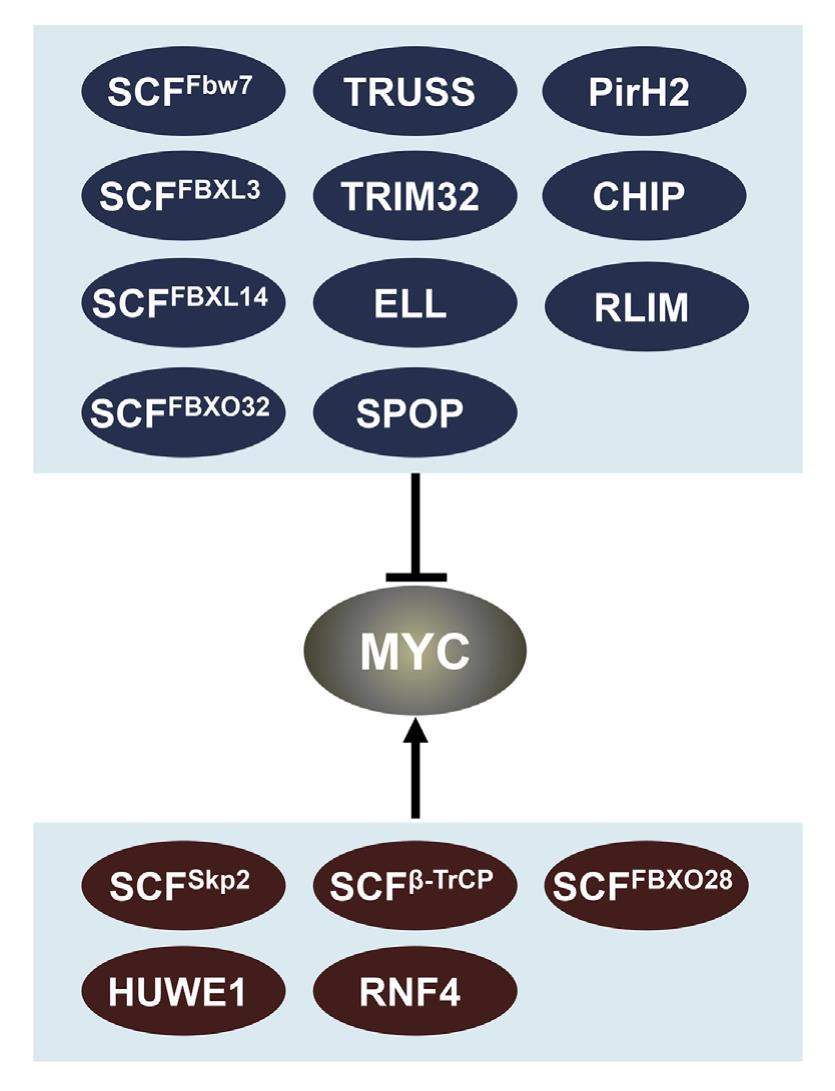
Writing and erasing MYC ubiquitination and SUMOylation


The transcription factor c-MYC (MYC thereafter) controls diverse transcription programs and plays a key role in the development of many human cancers. Cells develop multiple mechanisms to ensure that MYC levels and activity are precisely controlled in normal physiological context. As a short half-lived protein, MYC protein levels are tightly regulated by the ubiquitin proteasome system. Over a dozen of ubiquitin ligases have been found to ubiquitinate MYC whereas a number of deubiquitinating enzymes counteract this process. Recent studies show that SUMOylation and deSUMOylation can also regulate MYC protein stability and activity. Interestingly, evidence suggests an intriguing crosstalk between MYC ubiquitination and SUMOylation. Deregulation of the MYC ubiquitination-SUMOylation regulatory network may contribute to tumorigenesis. This review is intended to provide the current understanding of the complex regulation of the MYC biology by dynamic ubiquitination and SUMOylation and their crosstalk.
